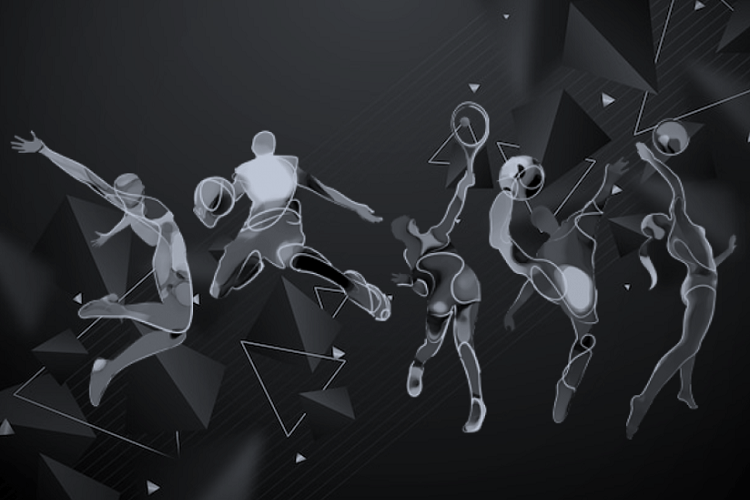The use of digital technology in sports has increased in recent years due to continual access to the internet (through phones, tablets, laptops, watches, etc.).
At the moment, it fulfills an important function by facilitating the enhancement of performance in both training and competition for an enormous number of athletes competing in a diverse variety of sports.
Tracking the progress of matches has also been easier and more time efficient as a result of the proliferation of smart technology. Would you be interested in learning more about the Digital Technology in Sports ? If that’s the case, don’t worry about anything. Things will all be clear one by one.
What degree does the use of technology contribute to the world of sports?
The panorama of sports has always been marked by a certain degree of complexity. In the quest for improved athletic performance, a wide range of training modalities, goods, and accessories have been included into the various methods, products, and accessories that have been used.
This is all done with the athlete’s comfort in mind, with the awareness that their best possible performance is still within their grasp.
Additionally, digital technology in sports helps with the collecting of basic data, which are then used in the recreation of games. Therefore, coaches are in a better position to make choices on behalf of their athletes as a result of this. Moreover, newspaper and magazine outlets worldwide will benefit from reporting on important aspects of sports, such as football, more effectively.
Why you believe digital technology plays an essential role in sports?

As we’ve seen, technology has emerged as a formidable ally for the sport, bringing about a variety of beneficial improvements in the natural environment. These changes have been brought about by numerous positive developments brought about by technology.
Not only does each new technology breakthrough make it easier for referees to keep an eye on the action, but it also motivates athletes to perform at their very best and exceed their own expectations.
Therefore, artificial intelligence helps to fill in the blanks that the human eye is unable to perceive, which ultimately leads to a more accurate result.
Referees in football games, for example, may make better use of computerized point systems to expedite their operations. This technology is also being used on tennis and volleyball courts in order to increase scoring accuracy.
Because of the various start times and, in some instances, simultaneous start times, it would be exceedingly difficult to keep track of a lot of different games at the same time. Thanks to developments in technology, spectators are able to witness a greater number of games than ever before, even if they are all taking place at the same time.
What kind of influence does today’s technology have on sports?
A wide range of sports, such as volleyball, football, swimming, fencing, athletics, and others, have already made excellent use of technology, and the results have been quite positive.
The phenomenal growth in the field of competitive physical sports has been largely attributed to the interaction that takes place in real time between players and coaches. In addition, there is ongoing investigation into the creation of innovative activities. The following technologies are primarily responsible for the majority of these advancements:
Nanotechnology
integrates nanoparticles into the formation of tissue, which gives the tissue a stiffening effect upon contact, so protecting the athlete from potential injury. The method is not yet commercially available, although preliminary tests have shown encouraging results;
Biomechanics
This gadget is popular among swimmers since it not only monitors their heart rates but also records their strokes and jumps while they swim. It makes a contribution to the development of fast skin, a kind of clothing used in competition that is intended to reduce the negative effects of the body’s contact with water;
Eagle eye
After a tennis ball has been hit into play, this new technology, which is a video monitoring system utilized in the sport, has the capability of determining the ball’s identification from any vantage point.
The fields of information technology and telecommunications
An artificial intelligence system used in a variety of games with the purpose of assisting coaches in gaining a deeper knowledge of the specific capabilities and limitations of each of their players.
Review in a Hurry
The ability to rewatch a game is often regarded as one of the greatest game-changing developments in sports technology. This development, which can be seen in practically every sport, ensures that participants comply with the rules, and the winner is one who is really worthy of their victory.
Instruction That Is Improved
Athletes no longer have to run meaningless hundreds of unneeded laps or lift weights that are better appropriate for use in a mountain range, since this is no longer required of them. The advancement of technology has resulted in the creation of more advanced and mechanized training facilities. These facilities are now equipped with accurate technical instruments that enable the implementation of unique training strategies.
Enhanced Methods of Scouting and Coaching
The work of a talent scout was far more challenging in the early days of sports when compared to how easy it is today. The choices that scouting agents have to make have to be made on the go, and they have to rely on their instincts. Scouting has been simpler in current times because to the availability of several new technologies. This is due to the fact that scouts have access to a vast amount of information on the players they are interested in, such as their maximum speeds, passing ability, stamina, strength, and so on.
Increased Delight Upon Observation
In this respect, technical developments have proven to be of great assistance, both from the perspective of the spectator and that of the coach. The development of video cameras that are capable of recording and analyzing athletic events is one significant innovation that has been helpful to coaches in the modern age. Incredible is the simplicity with which home viewers may watch a game and have some understanding of the bigger picture of what they are witnessing. It is remarkable that the score of the game as well as the current time are clearly shown in the four corners of the TV screen.
Improved field and weather conditions
The venues that are used for a variety of sports, such as international football (soccer) stadiums, American football stadiums, and basketball courts, have all been improved as a result of technological advancements. It is a blessing that we no longer live in a time when athletes often get hurt because of the risky playing conditions they were subjected to. The proprietors of sports venues are continuously looking for new ways to improve the quality of the playing field, court, lawn, or other sports site in order to boost the overall performance of the athletes that compete there.
Top 10 Digital Technologies used in Sports
In addition, there are many technologies are used in sports. We have listed some of the best technologies that are used in sports activities for different purposes.
1. Video Ref Helper( VAR)
In recent years, the use of the video assistant referee (VAR) has grown more popular in football matches. Because this technology makes it easier to communicate bids while the game is in progress, the referee will have an easier time evaluating the offers that are made during a match. This reevaluation has proved to be the decisive element in determining whether a team would be penalized for their actions.
2. A costume for fencing
I was curious whether or not you had ever seen a fencing contest. If you aren’t aware with the guidelines for this action-packed exercise, you may be wondering how points are calculated when you participate.
It is very evident that the visual judgments made by the judges are unable to keep up with the rapid tempo of fencing. As a direct result of this, there is a margin of error that might potentially exist.
Because of this, it was possible to create florets and swords that are fitted with intelligent sensors that can measure the power of each stroke. When the appropriate buttons are pressed, the indicator device will light up.
In order for this to work properly, the costumes will need to be designed such that a little electrical current may go through them the whole way.
3. Computer that you can Wear or a Smartwatch
The novelty of the product that is a smartwatch has worn off. There are more straightforward models designed for athletes who participate in leisure activities, and there are also sophisticated smartwatches on the market that are able to monitor the performance of professional athletes with exquisite accuracy.
These gadgets are able to determine the amount of oxygen that is present in the blood in addition to monitoring the wearer’s heart rate, the number of calories expended, and the number of steps taken.
4. Intelligent Fabric
Another piece of technology that has the potential to assist you in keeping a closer eye on the development of your athletes is smart clothing. The strategy that is being suggested here entails the production of specialized clothing that is fitted with sensors in order to track the activities of athletes.
Following the collection of these data, the participant’s activity-related muscles, heart rate, and breathing rate may be monitored and analyzed. Everything is taking place at this same moment.
5. Sensors
The extensive usage of sensors may be credited with many of the recent breakthroughs that have been made in sporting gear and sporting accessory technology. Athletes could get an advantage by having sensors in their equipment, regardless of whether they choose to wear the sensors themselves or have them built into their shoes and clothing. The monitoring of vital signs and biometrics is only one of the many applications for which various sensors may be put to use; other applications include the instantaneous updating of scoreboards. Interested in finding out what the best sports apps for Android & iOS.
6. Chips with radio-frequency identification
RFID chips, which are used to time athletes while they compete in a competition, are a fantastic example of how technology is being used to make athletics better. These handheld devices have antennas built directly into them, and in order to facilitate monitoring, they broadcast wireless signals to base stations.
In long-distance races, RFID chips are often used so that broadcasters and spectators can track the exact location of racers at all times. This enables the broadcasters and viewers to make more informed decisions. Because of this, they are beneficial for platforms that promote connection with fans, as well as for judges in their evaluation of skill and accomplishment.
Both active and passive RFID chips are used in the events that are being competed in. Using active chips, which come with their own battery or power source, it is possible to monitor the exact instant when a person crosses a border. This tracking may be done in real time. Because passive chips don’t have their own power source, the only way to use them is in combination with sensors that are already included into the mat.
Even though they are more of a specialized product than some of the other things on our list, RFID chips are a great illustration of how current technology may be used in the sporting world.
7. The development of new technology for various tools
The protection of both athletes and fans is of the utmost importance in the sporting world. The health and safety of spectators has been a primary concern for the manufacturers of sporting goods, who have developed a wide range of devices specifically to address this issue.
The National Football League (NFL) started using new helmets in 2010 because of safety concerns about head injuries. The power of contact was spread out over a larger area by the helmets in the effort to reduce the risk of injuries to the head and neck. These kinds of wearable devices have recently joined the biometric wrist monitors that are already used by National Football League players.
Both ice hockey and auto racing, which are considered to be high-contact and high-impact sports, use comparable technology to improve the safety of their players.
A further issue that has to be addressed during sporting events is the protection of spectators, who run the risk of being hurt by moving bodies or flying debris. In place of concrete barriers at a number of racing events, including NASCAR races, steel and foam energy reduction (SAFER) barriers have been built. There has been some research conducted exploring the possibility of installing impact-absorbing glass in ice hockey arenas.
8. Disability Accessibility
As a result of developments in accessibility technology, sports fans of any background, including people with disabilities who in the past have had trouble entering games and stadiums, are now able to fully engage in the athletic experience.
The Australian Open tennis championship now provides descriptive audio for those individuals who are blind or have another visual impairment. By combining information on the real-time position of the ball with three-dimensional sound, they provided the audience with a full-circle experience.
It’s possible that handicapped spectators might benefit greatly from the use of electronic ticketing systems and other services that are contactless or run electronically. Because of this, they are able to circumvent any difficulties that may arise due to the absence of wheelchair access or accessible parking near fan sites such as ticketing booths or refreshment stands. Even if “in-seat delivery services” aren’t necessarily created with disabled fans in mind, they’re nevertheless a service that anybody who goes to a sports event could find handy.
9. Timing Devices
These days, very few people even bother to use stopwatches to keep track of the time during races. Because of this, the precision and dependability of a racing event are unaffected by the fact that individuals have different reaction times.
There are companies that are developing wearable devices for sports that can assist with the recording of correct scores and times. Athletes will be required to wear specialized equipment or clothing in order for every movement and acceleration to be tracked and recorded. Timing tools are sometimes used in the systems that are located inside venues, and other times they are built directly into the venues themselves.
10. Developments in the fields of athletics and technology
There is an increasing body of data suggesting that technological developments in the sporting goods sector will continue to increase in the coming years. There are a lot of businesses that are putting money into research and development of new technologies that will not only improve the performance and concentration of athletes, but also the whole experience of spectators.
As a direct result of this, efforts have been focused on improving and making the events more personalized for the participants. By establishing the Barça Innovation Hub, the Football Club Barcelona has established itself as a leading example.
It is a research and development center that is working toward the objective of enhancing the experience that match day provides for residents as well as visitors.
Conclusion
Even if there are a few negative aspects to sports technology, the positive aspects vastly outweigh the negative aspects.
If you have any questions or comments pertaining to this topic, please feel free to leave them below.



